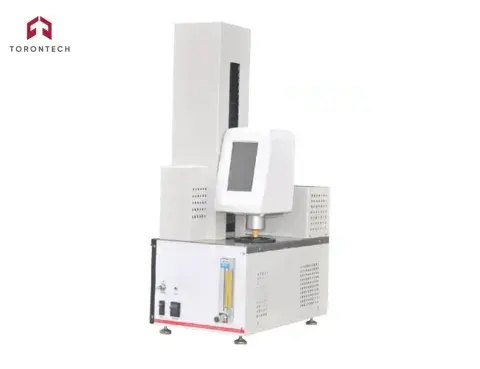Gel Index Tester (LTLS)
Gel Index Tester (LTLS) TT-5133
Gel Index Tester (LTLS) TT-5133 adheres to the ASTM D5133 Standard Test Method for Low Temperature, Low Shear Rate, Viscosity/Temperature Dependence of Lubricating Oils Using a Temperature Scanning Technique.
This test method entails measuring the apparent viscosity of engine oil at low temperatures and follows the ASTM D7110 Standard Test Method for Determining the Viscosity-Temperature Relationship of Used and Soot-Containing Engine Oils at Low Temperature. This method outlines procedures for determining the apparent viscosity of used and soot-containing engine oils under low-temperature conditions.
The primary application of the Gel Index Tester (LTLS) TT-5133 is to determine the low-temperature, low-shear-rate viscosity/temperature dependence of engine oils, in compliance with standards like ASTM D5133. The instrument uses a temperature-scanning technique to measure the apparent viscosity of the oil as it cools. This process identifies the Gelation Index, which indicates the temperature at which the oil forms a gel structure that could impede its ability to flow to the engine's oil pump during a cold start, potentially leading to engine failure.
Key Industries
- Lubricant Manufacturing: This is an essential research, development, and quality control tool for lubricant blenders who formulate multi-grade engine oils. The test is critical for ensuring their products will provide reliable low-temperature performance and pumpability, particularly for oils designed for use in very cold climates.
- Automotive and Engine Manufacturing: Automakers and engine manufacturers use the results of this test to specify the correct type of oil for their engines, especially for vehicles that will be sold or operated in cold weather regions. It is a key part of ensuring reliable engine startup and protection.
- Additive Manufacturing: Chemical companies that develop and produce pour point depressant (PPD) and viscosity index (VI) improver additives rely on this test. It allows them to evaluate the effectiveness of their additives in preventing oil gelation and in improving the low-temperature performance of finished engine oils.
- Metal bath cold well operates silently.
- Microcomputer temperature controller with PID adjustment and high-precision PT100 temperature sensor.
- One-button automatic lifting system and hydrometer automatic positioning.
- Unique test tube lock device for stable fixation of the test tube.
- Large touch screen for easy operation.
- Dedicated software for viscosity correction and linear accuracy analysis.
- Automatic calibration process with calibration data displayed in diagrams.
- Multiple temperature correction options, with the ability to add correction points as needed.
- Automatic viscosity scanning and generation of gel curve, with automatic analysis of gel index and temperature.
- Linear curve cooling system with adjustable cooling rate.
1. Cooling mode: Semiconductor for precise linear accuracy analysis.
2. Temperature control mode: Digital display PID temperature controller.
3. Temperature control range: Ambient to 40±0.1℃.
4. Measuring range: 0 to 40000mPa·s.
5. Operation mode: Touch screen.
6. Lifting mode: Automatic.
7. Rated voltage: AC220V, 50Hz. (110V also available)
8. Total power: Main Unit: 800W, Low temperature bath: 1200W.
9. Dimensions: Main Unit: 400*250*700mm, Low temperature bath: 430*540*730mm.
10. Net weight: Main Unit: 32kg, Low temperature bath: 45kg.

